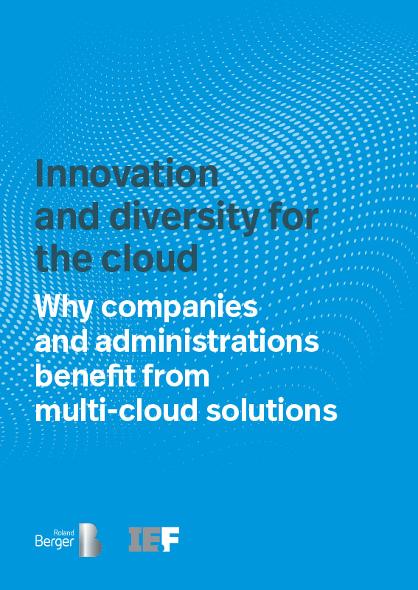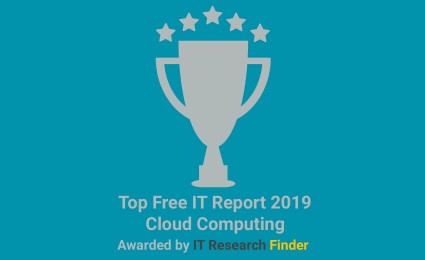Cloud computing: Europe needs innovation and competition
![{[downloads[language].preview]}](https://www.rolandberger.com/publications/publication_image/Roland_Berger_496_Cloud_Computing_Cover_EN_download_preview.jpg)
Cloud computing is one of the central prerequisites for successful digitisation of companies and administration in Germany.


Not just companies, but also governments and public administrations produce huge amounts of data every day. This includes conventional files as well as more and more data generated by machines such as sensors for traffic control systems, camera surveillance and weather stations. The growing quantity of data means public administrations face at least as great a challenge as companies because all of this data has to be stored, processed, analysed, and shared across organisations.
So what could be more obvious than treating them as companies and applying cloud computing, i.e. the flexible use of storage and computing capacities via a decentralised IT infrastructure? The cloud not only scores points with its great flexibility and scalability, but also represents high-speed IT services and maximum agility. It is not just resources such as data storage, computer capacities or networks (infrastructure as a service, IaaS) that can be procured in a decentralised way; entire infrastructures can now be procured as platforms (Platform as a Service, PaaS) or applications (Software as a Service, SaaS).
While cloud computing technology offers great benefits, the cloud computing market is facing adverse developments: Fewer and fewer providers dominate the market – with all the resulting negative effects. Internet giants such as Amazon, Google, Microsoft and IBM are taking increasingly larger market shares.
In Infrastructure as a Service, the top five providers - Amazon, IBM, Google, Microsoft, and AT&T - control 55 percent of the market. The public cloud in this area, i.e. the products that the general public can use, is dominated by Amazon with a market share of more than 50 percent. In Platform as a Service, the largest six dominate 65 percent of the market – Amazon and IBM are also leaders here.
The development is concerning because concentration and market domination not only means that companies, authorities and private individuals have fewer and fewer options available as a result. Lack of competition also slows down innovation and leads to rising prices in the long run. So what can be done?
An important lever for promoting diversity and competition is a so-called multi-cloud strategy. The user does not commit to a provider here, but buys the most suitable cloud solution for individual tasks, thereby diversifying its cloud portfolio. That way the applications and data are distributed across multiple providers. This simultaneously increases security because a higher – and therefore more expensive – security level can be selected for sensitive data than for non-sensitive data. Users with a multi-cloud strategy also avoid the so-called cloud-lock-in effect. This occurs when the cost of a change of cloud provider is so high that the user ignores it and instead settles for lower performance and/or higher prices.
The use of multiple clouds has long been commonplace in the private sector. More than half of companies rely on a combination of public and private clouds. Every sixth company uses several public clouds, and almost one in ten even has several private clouds.
Business has taken on a pioneering role in terms of cloud computing in this regard. Governments and public administrations operate under different, very specific conditions. But the use of cloud solutions will be essential to exploit the potential of digitised management. For example, the high scalability of cloud resources makes it possible to offer digital administrative services reliably even with very high demand. Exchange of data between government agencies or departments can also occur faster and easier with the help of cloud computing.
There is a threat of monopolies emerging – in the way we have already seen in markets for operating systems, online commerce and search engines. This poisons the diversity of the market and competition.
To continue to enable fair competition in cloud computing, governments need to play a role as both a customer and as a legislator.
As a customer, public administrations need to insist on a balanced cloud portfolio as part of a multi-cloud strategy. This means buying the most suitable cloud solution for individual task areas. Although this increases management efforts compared to a uniform single-cloud solution, it reduces dependency on individual providers. This will strengthen competition amongst various cloud computing providers and prevent the dominance of individual companies.
As a legislator, governments define the framework conditions of the market. They need to drive Europe-wide standards in this role for the security and interoperability of cloud services. Uniform security standards enable smaller cloud computing providers, in particular, to offer their products across borders throughout Europe. The introduction of common industry standards in cloud computing makes it easier for customers to combine the services of different providers or to “take their data” with them when switching providers.

![{[downloads[language].preview]}](https://www.rolandberger.com/publications/publication_image/Roland_Berger_496_Cloud_Computing_Cover_EN_download_preview.jpg)
Cloud computing is one of the central prerequisites for successful digitisation of companies and administration in Germany.

